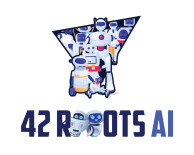Is GPT-2 publicly available?
Yes, but not through OpenAI’s API, it is available for free to download (see below).
Here’s a good video on GPT-2’s release:
Can I use GPT-2 for free?
While OpenAI has released the GPT-2 model weights and code, using it for free depends on your specific requirements and resources. If you’re comfortable setting up and running the model yourself, you can access the GPT-2 codebase and models on GitHub: https://github.com/openai/gpt-2
By downloading the repository and following the instructions provided, you can run GPT-2 locally on your own machine or on a cloud-based server. Keep in mind that running GPT-2, especially the larger models, may require considerable compute resources (e.g., a powerful GPU) to achieve optimal performance.
Additionally, there are several community-built wrappers and implementations of GPT-2 available, which may offer a more user-friendly way to interact with the model. Some of these wrappers may have free plans or tiered usage options.
It’s important to note that while you can use GPT-2 for free in some cases, there may be limitations in terms of performance, ease of use, and scalability compared to using a paid service or API, such as OpenAI’s API for their more advanced models like GPT-3 or ChatGPT.

How can I access GPT-2?
To access GPT-2, you can follow these steps:
Visit the GPT-2 GitHub repository: OpenAI has released the GPT-2 codebase and models on GitHub. Visit the repository at https://github.com/openai/gpt-2 to access the necessary files.
Clone or download the repository: You can either clone the repository using Git or download the repository as a ZIP file. To clone using Git, open a terminal/command prompt and type:
git clone https://github.com/openai/gpt-2.git
Alternatively, click the green “Code” button on the GitHub repository page and select “Download ZIP” to download the files as a ZIP archive.
Install dependencies: Navigate to the downloaded repository folder (either the unzipped folder or the cloned folder) using the terminal/command prompt. You will need to install the Python dependencies listed in the requirements.txt file. To do this, run:
pip install -r requirements.txt
Ensure that you have Python 3.6 or higher installed on your machine.
Download the GPT-2 model: You can choose from four model sizes (125M, 355M, 774M, and 1558M). The larger the model, the more powerful but also more resource-intensive it is. To download a specific model, navigate to the repository folder and run the following command, replacing <model_name> with your desired model size (e.g., 774M):
python download_model.py <model_name>
Run GPT-2: You can now interact with the GPT-2 model using the provided Python scripts. To generate text using the model, run the following command, replacing <model_name> with the name of the model you downloaded:
python src/interactive_conditional_samples.py –model_name <model_name>
This will launch an interactive session where you can input text prompts, and GPT-2 will generate responses based on your input.
Please note that running larger GPT-2 models may require significant compute resources, such as a powerful GPU, for optimal performance.
What is the difference between GPT-2 and GPT-3?
GPT-2 and GPT-3 (not to be confused with GPT-3.5 or GPT-5) are both generative language models developed by OpenAI, but there are significant differences between them in terms of architecture, scale, and capabilities:
Model size:
GPT-3 is substantially larger than GPT-2. While GPT-2 has a maximum of 1.5 billion parameters, GPT-3 has a staggering 175 billion parameters. This increase in model size contributes to GPT-3’s improved performance and ability to handle more complex tasks.
Performance:
GPT-3 exhibits a remarkable improvement in language understanding and generation compared to GPT-2. Its ability to generate coherent, contextually relevant, and grammatically accurate text is substantially better than that of GPT-2. GPT-3 also demonstrates a stronger grasp of context and is more adept at handling longer text passages.
Few-shot learning:
One of the most notable advancements in GPT-3 is its ability to perform few-shot learning. This means that GPT-3 can understand and adapt to new tasks with minimal examples, whereas GPT-2 typically requires more fine-tuning and task-specific training data to perform well on new tasks.
Task versatility:
GPT-3’s increased scale and improved performance enable it to tackle a wider variety of tasks with greater accuracy. It can perform tasks such as summarization, translation, question-answering, and even code generation more effectively than GPT-2.
Availability:
GPT-2 can be downloaded and run locally, as the model weights and code are available on GitHub. GPT-3, on the other hand, is accessible primarily through the OpenAI API, which requires an API key and is subject to usage limitations and costs.
In summary, GPT-3 is a more advanced and powerful language model compared to GPT-2, demonstrating significant improvements in performance, versatility, and few-shot learning capabilities. However, the increased complexity and scale of GPT-3 also make it more resource-intensive and less accessible for local deployment compared to GPT-2.
Can I download GPT-2 model?
Yes, access the GPT-2 repository at https://github.com/openai/gpt-2.
What is the learning rate for GPT-2?
The learning rate for GPT-2, as mentioned in the original research paper, is set to 2.5e-4 (0.00025). However, it’s important to note that this learning rate was used during the pre-training phase when OpenAI trained GPT-2 on a large corpus of text data.
If you plan to fine-tune GPT-2 for a specific task or dataset, you might need to experiment with different learning rates to find the one that works best for your particular use case. In general, fine-tuning often requires a lower learning rate than pre-training to avoid overwriting the pre-trained knowledge too quickly.
Additionally, the learning rate can be combined with a learning rate scheduler to adjust the rate during training, which can help improve model convergence and overall performance. OpenAI used a linear learning rate decay with a warm-up period for training GPT-2. This means that the learning rate starts at a low value, gradually increases during the warm-up period, and then decays linearly until the end of the training process.

